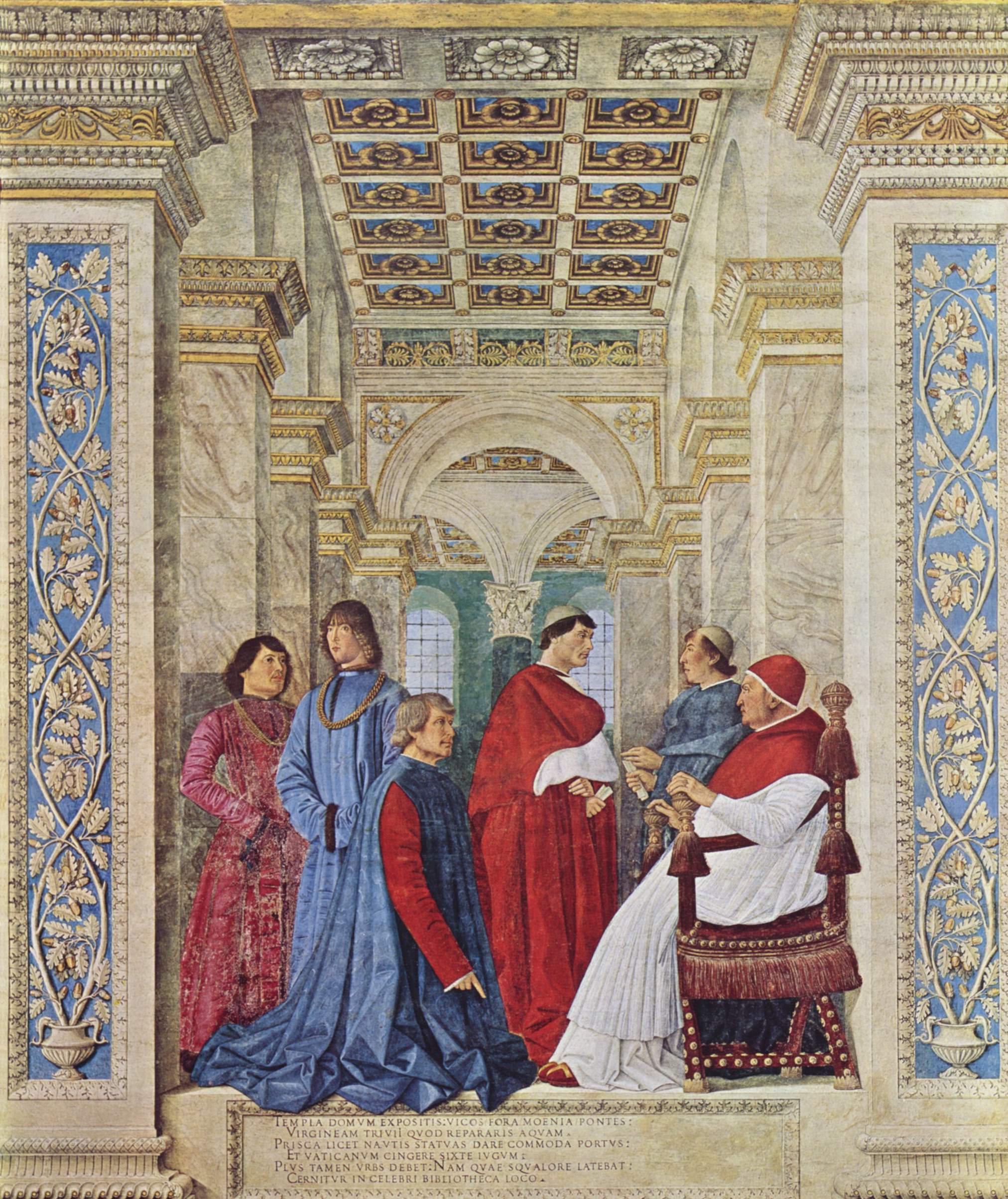b. 23 February 1417
r. 30 August 1464
d. 26 July 1471
I've been reading Martin Duberman's anthology, "Hidden From History", and in particular James Saslow on Homosexuality in the Renaissance. One of Saslow's key points is that at this time, men who had sex with men were not exclusive - in modern terms, they w0uld more likely be described as "bisexual". In a passage about how the rich and powerful freely made sexual use of their subordinates, I came across this throwaway reference:
r. 30 August 1464
d. 26 July 1471
I've been reading Martin Duberman's anthology, "Hidden From History", and in particular James Saslow on Homosexuality in the Renaissance. One of Saslow's key points is that at this time, men who had sex with men were not exclusive - in modern terms, they w0uld more likely be described as "bisexual". In a passage about how the rich and powerful freely made sexual use of their subordinates, I came across this throwaway reference:
Similar patterns prevailed among the clergy and educated humanists. Charges against Paul II and Julius II centred around their seduction of much younger men; Cellini's autobiography records a beautiful and talented youth, Luigi Pulci, who made a career out of service to Roman bishops.
Now, I knew about Julius II - and for that matter, Julius III - but this was the first sexual gossip I have come across concerning Paul II, so I explored further. This is what I found: it seems he died while being sodomized by a page boy.
Nor was he the only cleric who enjoyed some male company. Here's Saslow again:Paul II died, on July 26, 1471 of a stroke, allegedly whilst being sodomized by a page boy. After his death, one of his successors suggested that he should rather have been called Maria Pietissima, "Our Lady of Pity", because he was inclined to break into tears at times of crisis. Some historians have suggested the nickname was rather due either to Paul propensity to enjoy dressing up in sumptuous ecclesiastical finery, or his likely homosexuality.
Remember, while Paul II was enjoying his adventures with co-operative pages, elsewhere in Italy and the rest of Europe, "sodomites" were being burned at the stake for their "sin".The intimate living arrangements of the all-male clerical world and the opportunities that educational and religious duties afforded for privacy and empiotional intimacy, while not themselves "causes" of of homosexuality, may have contributed circumstantially to their expression. Priests in fifteenth century Venice and Stuart Sussex were convicted of sex with young parishioners, unpublished records of church trials in Loreto, Italy, in the 1570's detail the activities of a choirboy who slept successively with various older monks......
Nor was it only Paul's interest in boys that got my attention. On his election as pope back 1464, the cardinals tried to rein in papal power (and thus to increase their own), by imposing s range of tight conditions, which:
- bound the future pope to continue the Turkish war;
- forbade him to journey outside Rome without the consent of the cardinals;
- limited the number of cardinals to a maximum of twenty-four,
- all creations of new cardinals were to be made only with the consent of the College of Cardinals.
- Upon taking office, Paul II was to convene an ecumenical council within three years.
Paul II simply ignored these requirements, declaring that election "capitulations", which cardinals had long been in the habit of affirming as rules of conduct for future popes, could affect a new pope only as counsels, not as binding obligations. He then created a whole slew of new cardinals from his own loyalists.
Now, a half a millenium and more later, why does all this sound so familiar?
(Among his "achievements", he was friendly to Christian scholars; he restored many ancient monuments; made a magnificent collection of antiquities and works of art; built the Palazzo di St. Marco, now the Palazzo di Venezia; and probably first introduced printing into Rome. Paul embellished the costume of the cardinals, and collected jewels for his own adornment.)
Related posts:
Related posts:
- Gay Popes, Papal Sodomites
- Gay Popes: Julius II
- Gay Popes: Julius III
- Gay Popes: Benedict IX
- Gay Popes: John XII
- Gay Popes: Sixtus IV
- Gay Popes: Leo X (r. 1513-1521)
- Gay Bishops: Ralph of Tours (Promiscuos, Gay) and John of Orleans
- Homerotic Christianity: The Medieval Flowering








